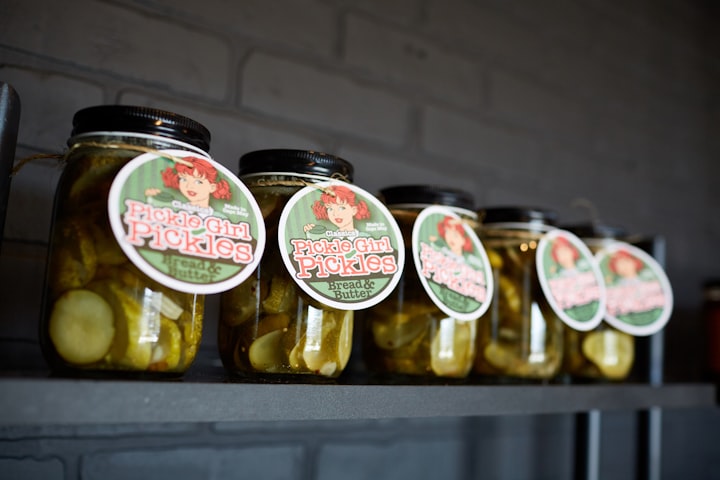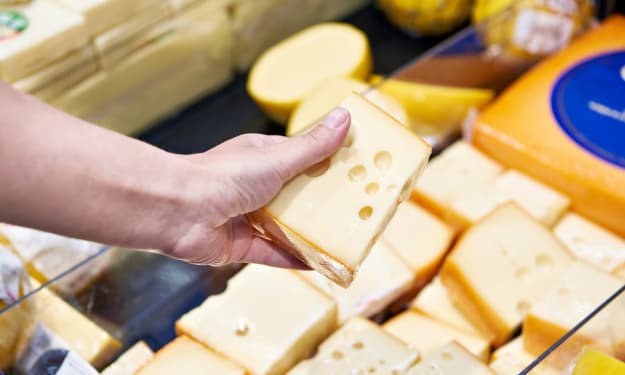4 Best Methods Of Preserving Fruits & Vegetables At Home
Preserve your excess produce in sustainable methods to prevent spoilage and waste

It is no secret that most of us, are now conscious of what we eat due partly to the age of information, and partly because we are eating more healthily. Now that summer is here, we naturally have an abundance of fresh fruits and vegetables, most of which are seasonal and we can get a lot cheaper than in other seasons. Also, some of us grow our own fruits, vegetables and herbs and we need to know the best methods of foods preservation that give us the utmost nutritional value, as well as preventing waste.
The method we choose will depend on the produce we want to preserve, and how we want to eat it, that is either directly in a salad, or cook with it, adding it as a sauce to cooking.
1. Pickling
Pickling is one way to stop any fresh produce from practically going to waste due to the produce going bad and unfit for consumption.
What Is Pickle (or Pickling)?
Pickles are fresh produce preserved in a solution of hot brine of acid (the acid is derived from vinegar or lemon juice). The brine is made of water mixed with salt and acid, either from vinegar or lemon juice. So, which vinegar is best? Basically, all kinds of vinegar can be used, that is, distilled white vinegar, rice wine vinegar, white wine vinegar, red wine vinegar or apple cider vinegar. The only issue with red wine vinegar is that it will colour the vegetables/fruits red.
“To eat is a necessity, but to eat intelligently is an art.” La Rochefoucauld
The History Of Pickling
Pickle is an old age long traditional way of food preservation at the time when there was no refrigerator. Pickling was born out of the necessity of preserving foods for a long voyage at sea, and ensuring that the foods would not spoilt. The hot brine solution kills the good, the bad microorganisms, and enzymes in the food, and produces an acidic environment that discourages spoilage and turns the vegetables sour.
It is believed that drinking pickle water helps with hydration, soothe blood sugar level and control muscle cramps, but this has not been scientifically proved.
Over the years, each culture has developed its own tradition in pickling that is suitable for its palate and type of fruits and vegetables.
Quick Guide To DIY Pickling
First, the veggies and or fruits must be fresh and are at peak of the life, washed thoroughly in running water. You can pickle whole fruits or vegetables, but the veggies and fruits will absorb the brine more if cut. Onions should be sliced, not diced, carrots in sticks, radish can go whole.
Use distilled water or natural spring water in a sterilised glass jar. Veggies with a high water content like cucumber and celery should first be salted. It is best to use natural sea salt.
Use 50/50 water and vinegar or lemon juice content. Add salt to taste. There is really no need to add sugar, but some do, to soften the brine acidity. Whisk the mixture together to get even, then boil before pouring on the vegetables and or fruits to be pickled.
You can add herbs and condiments like garlic, rosemary and your seasons of choice to the solution if desired. If you are adding garlic, remember that the garlic will turn green, but perfectly good to eat. Garlic contains an enzyme that makes it turn green or turquoise when it comes in contact with acid.
‘’You don’t need a silver fork to eat good food’’ Paul Prudhomme
Cover the jar and burp every other day to release the gas. The pickled vegetables will be ready to eat in about ten days. If you want to leave it longer, then transfer it to the refrigerator, which will slow down the pickling.
For quicker pickling, you can boil the water-vinegar mixture and pour over ready vegetables. Then transfer to a glass jar when cooled.
2. Fermentation
Fermentation is a much healthier and simpler choice of food preservation. Fermentation is creating a good environment for the enzymes in the foods to react with the natural sugars in the food by producing natural lactic acid. This lactic acid reaction allows the good bacteria to thrive while killing off the bad ones that will normally spoil the produce.
All you need for fermentation is salt and clean water. Either distilled or natural spring water. Again, natural sea salt is preferred. Choose 8 cups of distilled or natural spring water to half a cup of salt in a clean glass jar. Mix the solution to ensure complete dissolution of the salt. Submerge the fruits and vegetables to be fermented in solution in an air-tight glass jar.
Leave in a dry cool place. An ideal temperature is between 70 -74 degree Fahrenheit. Please note a higher temperature will ferment the produce faster.
Difference Between Pickling & Fermentation
The basic difference is that pickling produces the sour taste through the acidic medium that is added, whereas fermentation makes use of the enzyme in foods that react with the natural sugars in the food to produce the sour taste. Both are natural methods of food preservation.
Pickle is less healthy than fresh and fermented vegetables. The process of fermentation is adding salt to fresh vegetables and letting them sit in a glass jar at room temperature. The fermentation process prevents spoilage.
3. Freezing
Contrary to what most of us think, freezing fresh produce is more than just washing and putting them in the freezer bag, and popping them inside the freezer. They need to be blanched. Blanching is submerging the cleaned fresh produce in boiling water briefly, tossing them out and putting them in cold water. This prevents any cooking and the produce from going dull or soggy later.
‘’Blanching kills the surface bacteria, stops enzyme action which can cause loss of flavour, colour and texture, as well as retarding loss of vitamins’’ National Centre For Home Food Preservation.
Blanched vegetables are then packed and frozen.
4. Drying
Drying is mostly used for herbs and leafy vegetables, and this is a process of removing the water content. This concentrates the nutrients but makes the herbs look wobbly. Dried herbs and leafy vegetables can last very long, sometimes up to a year, if kept in an air-tight glass jar.
Depending on the leafy vegetables, the process of drying out herbs and vegetables is very simple. Wash thoroughly to remove traces of sands and dirt. Spread out on cleaned kitchen paper, spread out on the kitchen top, or any table that gives you room to properly spread out.
Some can also be hanged out in a basket in a closet, or any cool dry place. However, some vegetables will completely dry only by applying some heat. For these, use low-level oven heat, about 100–150 degrees, and watch regularly so that it does not completely dry out.
I understand there is also an electric food dehydrator that you can use to dry your excess produce.
The Takeaways
Pickles are low in calories and nutrients due to the killing of micronutrients in vegetables and fruits. It also contains salt, and therefore should be eaten less often.
If you grow your own foods and have excess produce, pickling and fermentation are good ways to avoid waste. Fermentation is a lot healthier than Pickling. Both are a sustainable way to preserve foods.
“We all eat, and it would be a sad waste of opportunity to eat badly.” Anna Thomas
Leafy greens and herbs are best preserved by drying.
Food hygiene is essential in all the above processes, like good hand washing, as well as ensuring the utensils and fresh produce are preserved without any dirt.
About the Creator
Lanu Pitan
An avid reader first and foremost. A lover of Nature, as Nature is the language of God. Love is all that the law demands.






Comments
There are no comments for this story
Be the first to respond and start the conversation.